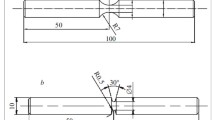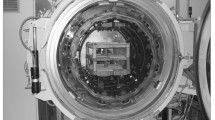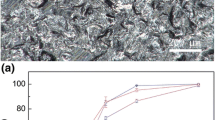Conclusions
-
1.
A change in the phase composition of steel Kh12F1 and an increase of the dislocation density in α and γ phases occur at a depth of as much as 300 μ and depend on the quenching temperature.
-
2.
The wear resistance is highest for blades quenched from 1050–1130°, in which the quantity of retained austenite does not exceed 40%. Quenching from 1130° is preferable. This ensures a fairly high structural strength in combination with high wear resistance due to hardening in the process of operation.
Similar content being viewed by others
Literature cited
A. P. Gulyaev and Ya. É. Sanchuk, “X-ray study of high-chromium steel”, Zh. Tekh. Fiz.,22, 11, 1721 (1952).
Ya. S. Umanskii, X-Ray Analysis of Metals [in Russian], Mashgiz, Moscow (1951), p. 230.
Additional information
Zaporozh'e State Pedagogical Institute. Translated from Metallovedenie i Termicheskaya Obrabotka Metallov, No. 10, pp. 61–63, October, 1974.
Rights and permissions
About this article
Cite this article
Belov, V.N., Titukh, Y.I. Wear resistance of shot peener blades of steel Kh12F1. Met Sci Heat Treat 16, 878–879 (1974). https://doi.org/10.1007/BF00664260
Issue Date:
DOI: https://doi.org/10.1007/BF00664260




